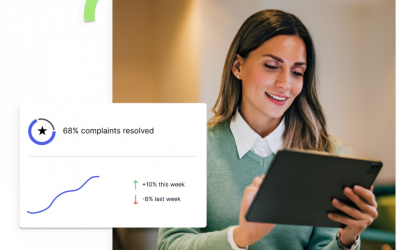Measures, metrics, and indicators (often referred to as Key Performance Indicators or KPI) are common words in the field of workforce analytics. More than jargon, these three terms define the building blocks of data analytics that help HR professionals understand their workforce.
Defining the Terms
A Measure is a concrete piece of data. It’s objective, not interpretive – it just is what it is.
A Metric can be thought of as “measurement with a purpose.” Measures become metrics when they are compared or contrasted in order to figure something out.
An Indicator is a subjective metric, with Key Performance Indicators metrics for success. KPIs are often specific to an organization’s priorities.
Because all this is a little hard to describe, take the brick-and-mortar example of a restaurant space.
- To create a dining area that will hold 12 round tables, each three feet in diameter, designers have to make some calculations and take precise measurements.
- Metrics for the dining space might include enough room between tables for efficient traffic flow, distance of each table from the kitchen, distance of each table from each other, and the number of chairs needed.
- Key performance indicators of success related to space design may involve choices such as maximum number of people that can be served comfortably at each seating of the night (serving more people = more income) as well as lighting and décor (an environment that attracts diners).
From Terms To Applied Analytics
How do measures, metrics and KPIs work together in workforce analytics? When ZeroedIn works with your organization, we utilize the workforce data that you’ve collected. Your measurements, sliced different ways, become metrics that create information about different workforce topics related to your business goals. Analytics of the various metrics indicate trends and patterns that increase knowledge about your workforce, and provide insight that leads to solutions.
Let’s break down one of the Top 10 workforce insights that organizations ask for, Absenteeism, to see some examples of measures, metrics, and indicators.
- Measures of Absenteeism: Number of people absent per day, hours absent per person per day, hourly rate of persons absent.
- Metrics for Absenteeism: Categories of absenteeism (illness, injury, lack of childcare, etc., including unknown), hours of lost productivity due to absenteeism, frequency of absenteeism per person.
- Indicators of Absenteeism: Patterns that show some employees can work from home part-time to meet both personal and work obligations, some employees are not engaged with their jobs, and other trends that can give organizations insights that lead to solutions.
A Tool To Reinforce The Importance Of Workforce Analytics
HR professionals struggling to convince their C-suite management to provide more resources might find this insight useful. The building blocks of workforce analytics can be a tool to show others the relationship between measuring employee problems and solving those problems.




